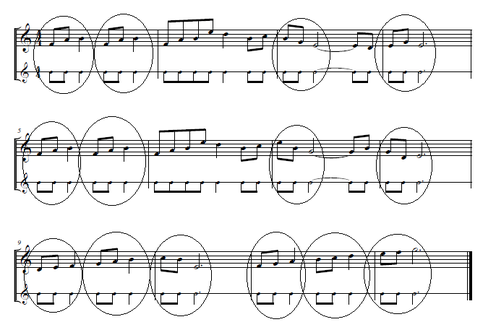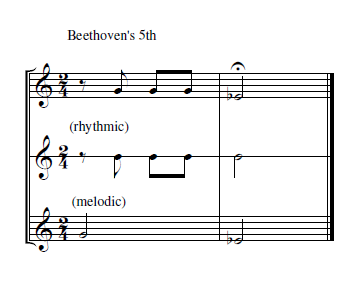|
Hey guys...it has been a really, really, REALLY long time *wince* I hope my absence hasn't offended any fans of this blog! Believe you me, it hasn't been due to a lack of creativity or ideas for new articles--I have a list about a mile long of dorky musical things to write about! Life just grows increasingly more hectic as I try to balance all of the different hats I wear, plus my summer internship in LA with a few video game/film composers. It's been a fun ride so far, and I've been learning a ton. I sure have been missing this blog though, so I hope to be getting back in gear with this and writing more often. So let's get down to some musical biz-ness! For those of you familiar with my quirky sense of humor, it probably comes as no surprise that Banjo-Kazooie is one of my favorite game franchises of all time. The sense of humor is right up my alley, and I love everything about it from the artwork to the gameplay to (of course) the music, composed by Grant Kirkhope. I actually grew up with many games featuring Mr. Kirkhope's scores, without even realizing it! Goldeneye 007, Donkey Kong 64, Perfect Dark, and of course B-K and B-T. I've been DYING to write this post for a while now, and I've finally managed to scrape all of my thoughts together into what is hopefully a cohesive article! For those of you unfamiliar with this particular bird and bear: B-K was a platformer, very similar in construction to one of its contemporaries, Super Mario 64. You traveled to different “worlds” via paintings, and had to collect tokens (musical notes and jigsaw puzzle pieces) to unlock different sections of the central overworld (Gruntilda's Lair). The methods for obtaining the more difficult “Jiggies” involved solving puzzles, fetch quests, racing or battling enemies, etc. It actually sounds a LOT like Super Mario 64 when described that way, so what makes the game different? First of all, the characters and story, of course—and there aren't enough words in the English language for me to describe how ridiculously silly, fun and downright hilarious this game is to me. There is a witch doctor character named Mumbo Jumbo. MUMBO JUMBO. Tell me you don't love everything about that. And in turn, these aspects of story and gameplay inform the musical score. Grant Kirkhope composed the music to accompany the awesomeness, and I seriously cannot convey how much I freaking LOVE THIS SCORE. It has a style and personality that is unlike any other game to me; and it's not like he was trying to break new ground and write crazy orchestration, or wildly atonal tracks. On the contrary, the melodic construction is very simple and straightforward, easy for the ear to follow. It has a few harmonic twists and turns, but not in a distracting way. In fact, one of the most important things to keep in mind when writing music for open-ended, non-linear gameplay is the fact that, depending on the difficulty of the game/the skill level of the player, he/she could be stuck there for hours. Or if you're like me and simply could NOT figure out how to open the door into Grunty Industries, for DAYS. And with nine different worlds plus several other locations, character themes, etc., that's a lot of music. And therein lies the challenge. Compare a game to an opera; both can be short works with appropriately short scores, or they can be large-scale works with several hours worth of music. For the latter, whether it's a game or an opera, the challenge is the same: how do you create one piece out of all of that music? How do you create a single, long work that takes hours to fully experience, without losing the attention or understanding of your listener, or feeling like several smaller pieces that don't connect? The answer is always different, and that's why we study and analyze music. In the case of Banjo-Kazooie, the answer for me is: the harmonic motive. This is the sort of thing where the brilliance comes from it simplicity; you hear it, you notice it but don't know how to put words to it. Let's see how Wikipedia did: A harmonic motive is a series of chords defined in the abstract, that is, without reference to melody or rhythm. That's possibly a bit confusing at a first glance; let's break the definition down. What does motive mean? It's the stem of another word we use more often: motivate. When a person is motivated, they are driven by a purpose, idea, or goal. A musical motive is essentially just that: a musical idea that drives the content of a piece. Whether it's melodic, harmonic, rhythmic, etc, it's simply a small, short idea on which a composition is based. It can be melodic: Or rhythmic: Sometimes, a mixture of those two. Or--it can be harmonic. This one is trickier, because it must defined outside of melody and rhythm. It is not, in-and-of-itself, a complete chord progression, but rather a small chunk on which a progression may be a built. Banjo-Kazooie is a PERFECT EXAMPLE OF THIS. I tried to find the simplest, most straightforward use of the motive in the game, and the first one that popped into my head was the musical cue for unlocking a World Door. Have a listen: Whether you read music or not, that looks pretty horrifying--but even just from listening, you probably noticed that it's simply the same two chords repeated over and over, C Major and F# Major. I circled it in the first beat, but it continues throughout the entire measure. Listen to it again, focusing on the bass note--it just oscillates (switches) between C and F#, making the chord change easy to hear. This particular interval (distance between two notes) of six half-steps is called a tritone. It has a very distinctive sound, doesn't it? For those of you who have played B-K, it may sound familiar. That's because you hear it throughout the entire game. ALL. THE TIME. Those are just a few examples from a few pieces in B-K and B-T; the chords built off of the tritone are either both major or both minor, so the chord quality sounds different in some of the examples; but the interval between the chords sounds the same. Now let's get specific: why do we recognize these chords? Why do they have a more unique sound than any other pair of chords in Grant Kirkhope's score? The technical, music theory reason is: this chord relationship does not naturally appear in major/minor scales. For example, the World Door Open theme is in good ol', traditional C Major. In the keys of C Major (and C Minor), the necessary pitches for any kind of F# chord (major or minor) do not exist: This is not to say the tritone itself does not exist. Looking at the major scale, you may have noticed that the F to B relationship is six half-steps; in the minor scale, the D to Ab as well. But you'll notice that the chords built off of those pitches are not BOTH major or minor. One of the chords is diminished. Building two major/minor chords off of the interval of a tritone requires the composer to borrow pitches from outside the scale--and THAT'S what makes this chord relationship jump out at us. And since the entire score to this game is clearly composed in major/minor, this particular chord relationship with their entirely unique sound immediately leaps out to us, making it an incredibly powerful harmonic motive. It's instantly recognizable when you hear it....and yet not distracting, at all, because the motive has been woven so tightly into the fabric of the score, as you heard in the above examples. But to REALLY answer the question “Why these chords?”, we should go directly to the source, Mr. Grant Kirkhope himself. And thanks to my complete and total addiction to Game Grumps, we can! (Jump to 55:03 for his discussion of the motive--but I HIGHLY recommend you watch the entire thing!) Amazing how such a small, elegantly simple decision can color an entire score and enhance the story that much more. Love it :)
Enjoy this week's transcriptions of Gobi's Valley (Histup) and World Door Open from Banjo-Kazooie, and Going in Circles from Bio Menace! More on the way!
4 Comments
6/25/2013 03:35:28 am
Thank you for the article-- this is also one of my all time favorite games, and I'm a huge fan of Grant, and this score.
Reply
Jorge Araya
6/25/2013 08:52:54 am
Lady, you rock! Amazing how in a few words you can teach such complex things. As a music teacher, I Salute you :)
Reply
Philipp
7/2/2013 03:51:23 am
Never played Banjo-Kazooie but a game that is much like Mario 64 and you say it has good music? I will make sure to check it out asap ;-)
Reply
Leave a Reply. |
AuthorVideo game music was what got me composing as a kid, and I learned the basics of composition from transcribing my favorite VGM pieces. These are my thoughts and discoveries about various game compositions as I transcribe and study them. Feel free to comment with your own thoughts/ideas as well! Archives
July 2017
Categories
All
|









 RSS Feed
RSS Feed
